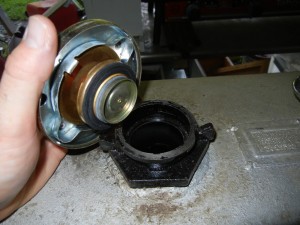 Print a Sign-In Sheet | Spanish Version
Print a Sign-In Sheet | Spanish Version
Things to Remember
- Never smoke during refueling operations. Do not refuel near an open flame. Keep a C02 (carbon dioxide) or an ABC Dry Chemical extinguisher handy.
- If there’s a chance of a vehicle rolling while being refueled, chock the wheels. Before filling the fuel tank, shut off the engine.
- If the fuel tank is located near the engine or other hot areas, such as the manifold or muffler, let the engine cool before filling the tank.
- When transferring fuel from a can, mobile tank, or fuel truck, keep the spout or nozzle in contact with the fuel tank. As fuel is poured, it can generate static electricity. If a spark ignites the fuel vapors, a fire or explosion could result.
- Take your time and be careful not to spill the fuel because it could ignite if it comes in contact with something hot. Do not overfill or “top off” the tank. If the equipment is in the hot sun, the fuel will expand and may overflow. Leave enough space in the tank to compensate for expansion or tilting.
- After refueling has been completed, be sure all fuel has been drained from the hose and that any spills are cleaned up immediately.
KEMI does not assume liability for the content of information contained herein. Safety and health remain your responsibility. This information is to be used for informational purposes only and not intended to be exhaustive or a substitute for proper training, supervision, or manufacturers’ instructions/recommendations. KEMI, by publication of this information, does not assume liability for damage or injury arising from reliance upon it. Compliance with this information is not a guarantee or warranty that you will be in conformity with any laws or regulations nor does it ensure the absolute safety of any person, place, or object, including, but not limited to, you, your occupation, employees, customers, or place of business.

